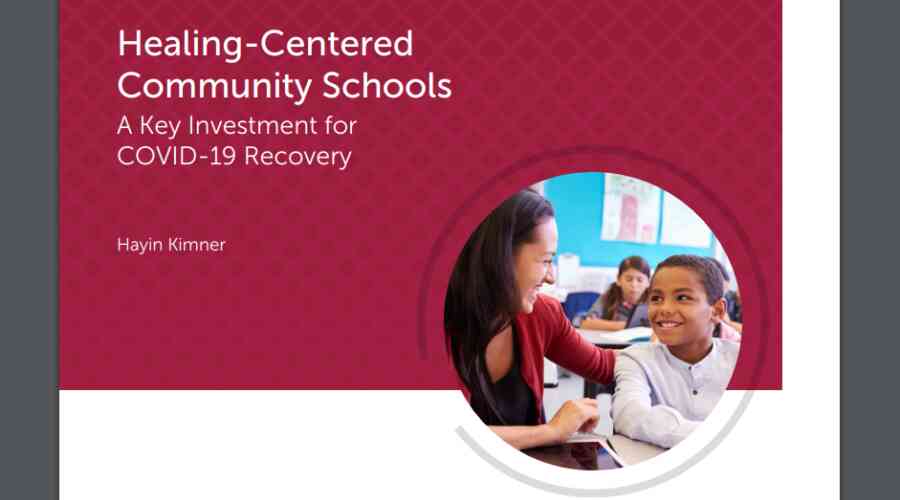This year’s California state budget includes robust new funding for community schools. How can those resources best be directed to making sure community schools are healing-centered and can address the learning loss and other impacts of the pandemic? This new PACE publication set by Hayin Kimner provides a concrete example of what this kind of school looks like in practice as well as guidance for leaders at the school, district, county, and state level about how to support effective implementation at scale.
- The policy brief Healing-Centered Community Schools: A Key Investment for COVID-19 Recovery lays out a vision for how leaders at all levels of education, health, early learning, and other child-serving systems can build the capacity and integration needed to sustain whole-child focused community schools into the future. Recommendations to district, county, and state decision makers as well as philanthropic partners detail how this moment can advance policy and systems integration to sustain healing-centered community schools.
- The companion practice brief Practices of a Healing-Centered Community School argues that effective healing-centered community schools must be organized so that students, educators, families, and community partners can meaningfully work together to create high-quality teaching and learning conditions that: (a) center racial equity and justice by repairing and earning trust; (b) provide support and capacity; (c) offer opportunities to learn, lead, explore, and thrive; and (d) are rigorously accountable for multiple preconditions and dimensions of student success.
- The infographic Foundational Practices of Healing-Centered Community Schools condenses these practices into an infographic with a straightforward list of principles and actions.

